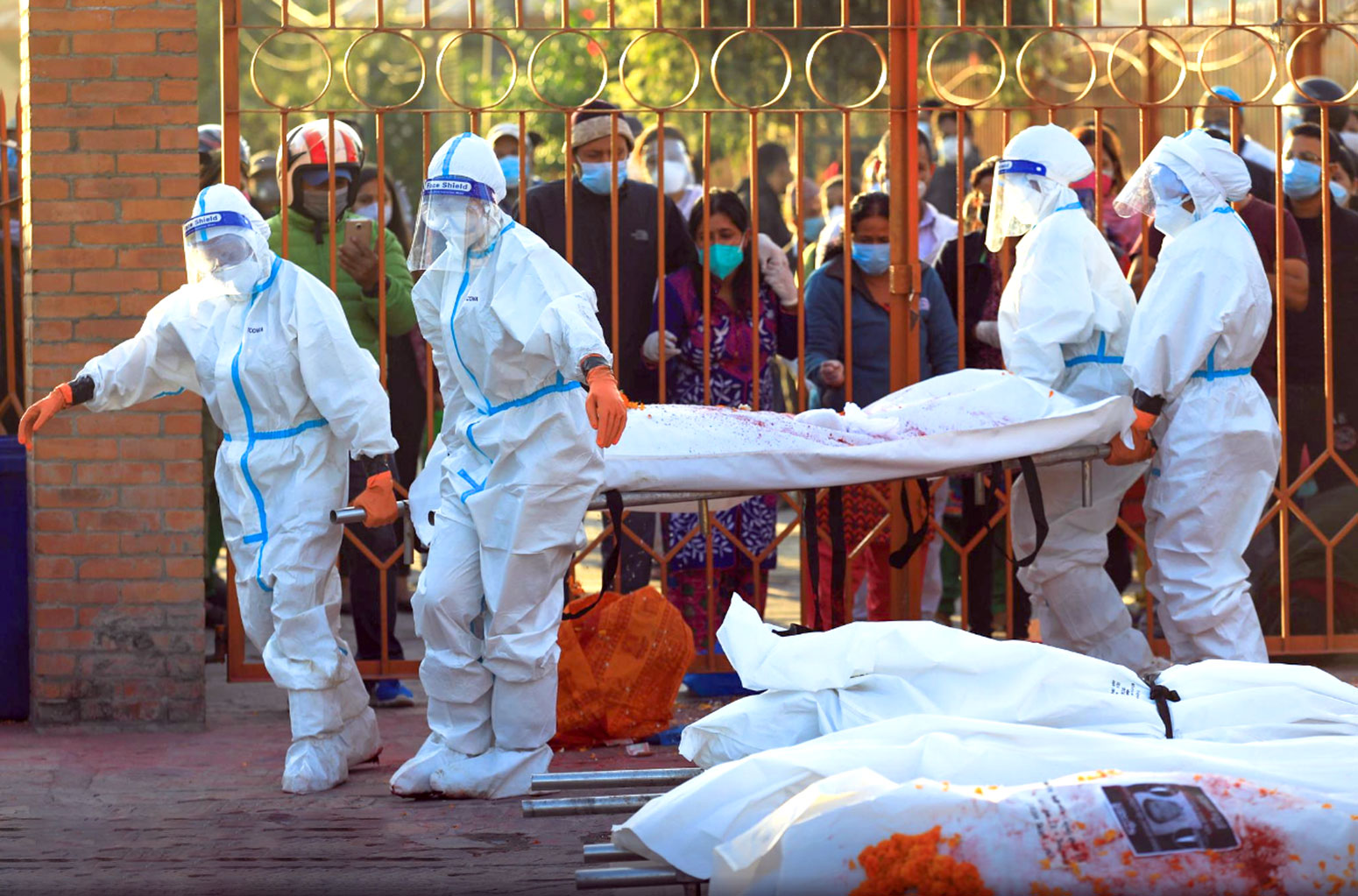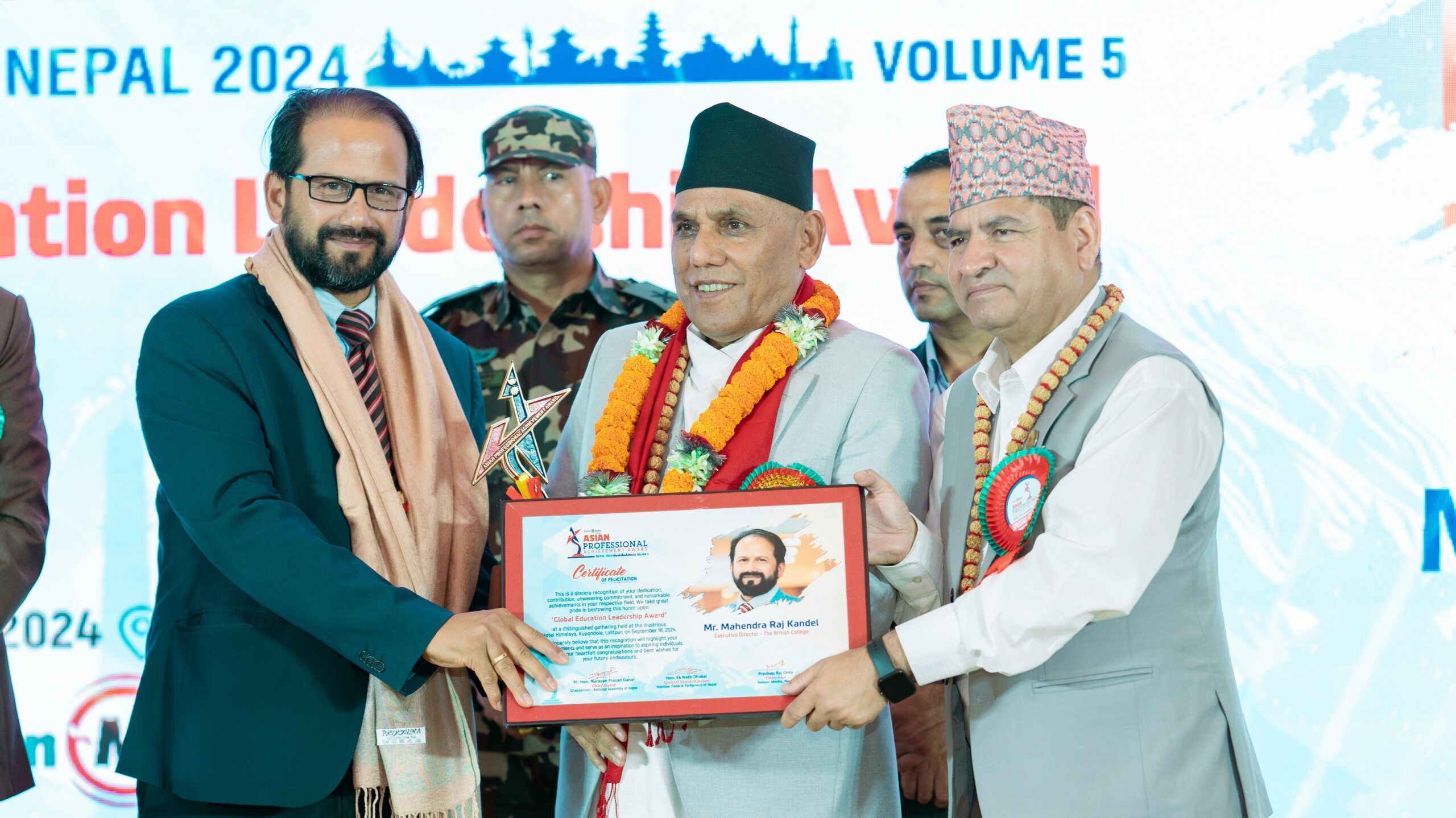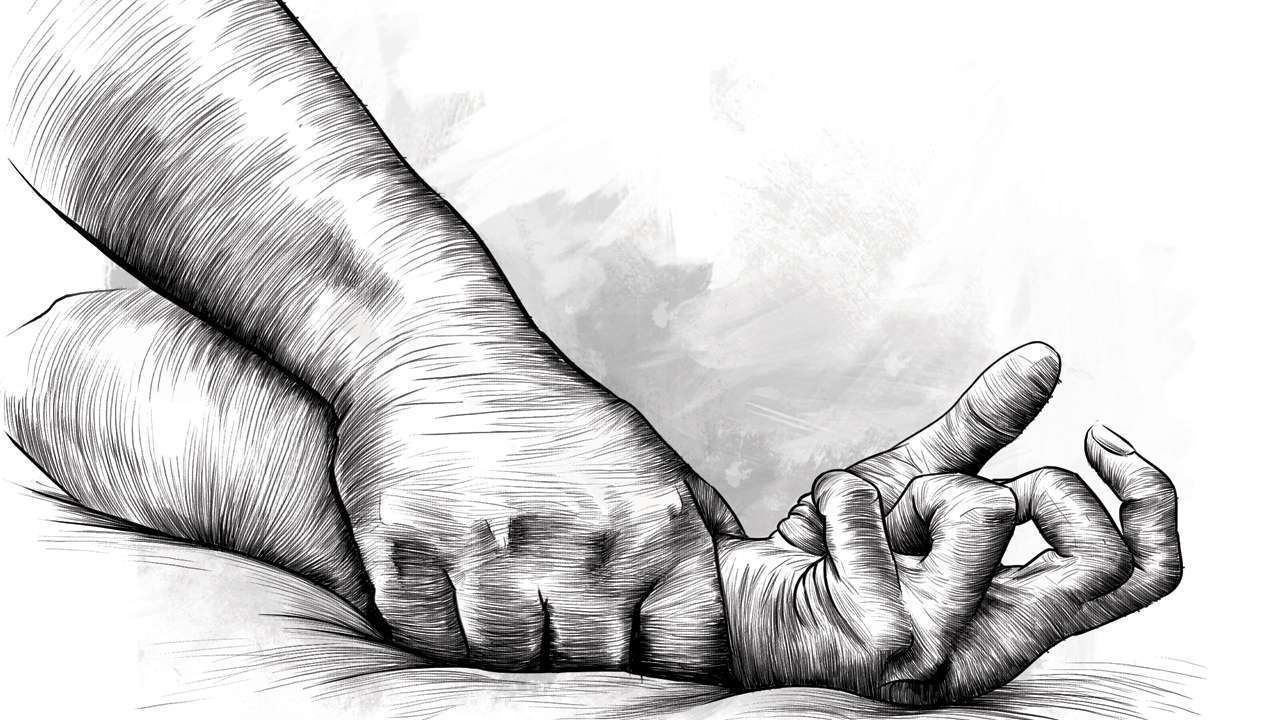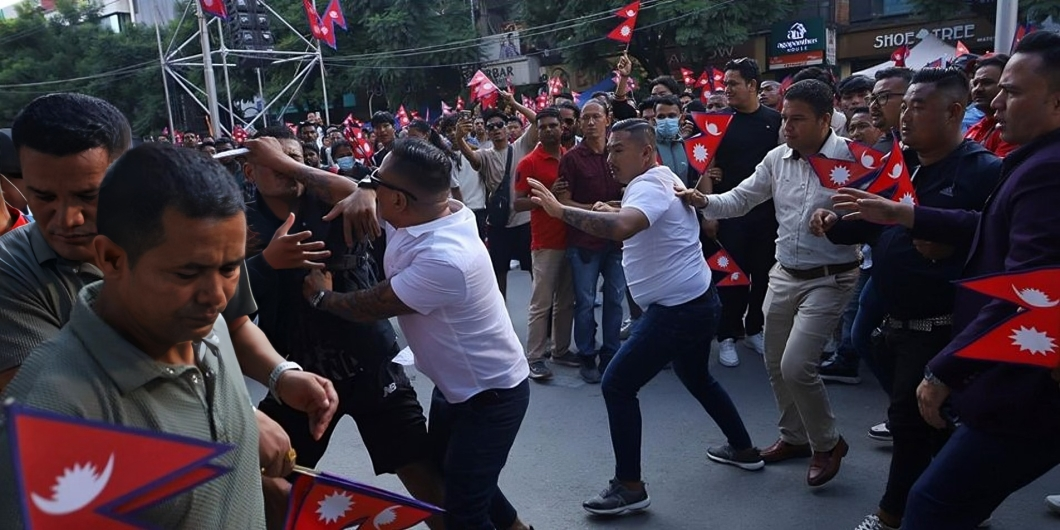Covid epidemic in Nepal: what was learned, where did it go wrong?

- Laxman Karki
KATHMANDU: Director of Patan Hospital Dr. Ravi Shakya is happy that the number of patients in covid has decreased at the hospital. But he is also worried that the epidemic will re-emerge with the changed form of the corona virus. “We are on high alert because the risk is not over,” he said.
Clinical Research Unit Coordinator of Shukraraaj Tropical & Infectious Disease Hospital, Teku and Virologist Dr. Sher Bahadur Pun says that with the change in the nature of the virus, the fear and risk of Covid epidemic has increased. “In the current scenario, we seem to have won over Covid, but the new form of the virus has also raised concerns,” he said.
Dr. Pun fears that the growing congestion with the activities of political parties for some time could become a ‘platform’ to spread the epidemic. Not all the people in the power struggle between the political parties and the leaders seem to have adopted the standards of health care. He said that the epidemic can be defeated only if everyone is alert and vigilant in such matters.
Although the incidence of Covid in Nepal has decreased, in some countries of the world, its second-third wave has appeared and a new form has also appeared. Dozens of other countries, including Europe, are facing increasing risk of further epidemics, with woodcuts increasing and gatherings banned. Neighboring India, which has open access to Nepal, has not yet come under control of Covid and India is the second most affected country in the world in terms of Covid infection.
According to the World O Meter, which is updating the global statistics of Covid-19, Nepal is ranked 48th out of 221 countries where Covid is seen. Corona virus has been confirmed in one person for the first time on Magh 10, 2076 BS. Of them, 271,116 have been cured. So far, 3,012 people have died in Nepal. 942 people are actively infected. None of them are in critical condition. Nepal has an infection rate of 9,325 per 1 million population and a mortality rate of 102 per 1 million. On an average, 74,699 out of every 1 million Nepalis have not been tested for Covid, according to World Meter.
The text of the epidemic:
According to public health experts, Nepal’s experience in the first phase of COVID-19 may be helpful in avoiding possible risks. In the first phase, there were many weaknesses in Nepal and not being able to learn from them and formulate future strategies in time could lead to greater risks, said a public health expert. Rabindra Sameer has an assessment.
Former Director of Epidemiology and Disease Control Division Dr. Baburam Marasini also emphasizes the need for immediate response planning based on first-stage learning and experience as the risk of mutated viruses increases.
Surendra Yadav of Parsa still has a sad face when he remembers the impact of Covid-19 on his family. His brother Rabindra had died from Covid last Jestha. “I was in Kathmandu when news came that my brother was ill. Due to lockdown I was unable to leave children and go home immediately. Neighbors rushed his brother to the hospital, but he did not survive, ‘he said. Would I have survived if it had been as comfortable as it is now? ‘
Gaurika Sharma (name changed), a staff nurse at Bir Hospital, also shows how even the country’s largest hospitals failed to manage the epidemic. She says that hundreds of health workers, including herself, have contracted Covid infection from Bir Hospital due to poor management. “There was not enough information about the disease. The patient’s pressure was too much. The hospital did little to prevent it, ‘she said.
At that time, Bir Hospital used to give a simple surgical mask to the health workers and seeing that it would not be safe, the health workers bought N95 masks themselves, she said. The risk of transmission was high as there was no separate treatment room for Covid and Non-Covid patients.
Corona was seen in 39 health workers including 11 doctors on the same day at Bir Hospital. At the same time, the hospital’s OPD service had to be shut down for a few days as 75 health workers were in quarantine.
Weak management:
After the spread of the epidemic in Nepal, there were many problems in the management and treatment of the disease. There was no detailed information about the virus, nor was there any necessary preparation to deal with it. There were many challenges in the physical infrastructure of hospitals and health institutions, testing and treatment facilities as well as in the management of health materials and manpower. The government was alarmed.
The monitoring by the parliamentary committee had also confirmed that the management of the hospitals was chaotic. A sub-committee of the Education and Health Committee of the Parliament conducted an on-site monitoring at the hospital including T.U. Teaching last Bhadra and found that the patients of Covid were not able to get treatment on the one hand and other diseases were also deprived of treatment due to Covid-19 on the other.
However, the management of all the hospitals in the country was not bad. Among the hospitals dedicated to Covid’s treatment, Teku, Patan, Armed Police Force and other hospitals are relatively well managed, said Arjun Adhikari, a journalist who reports on health bit in a new daily.
Bishnu Khadka, a journalist of AP One Television, who spent seven days in the ICU of Shukraraj Tropical and Infectious Diseases Hospital, Teku, got all the arrangements including treatment, sanitation and food.
“A team of consultants and doctors would visit the patient four or five times a day and encourage him saying that he would be fine now,” he said.
External experience and our weaknesses:
Disasters like epidemics cannot be avoided, but their damage can be minimized. Even in Covid, some countries with strong disaster preparedness have suffered the least from the epidemic. Thailand is an example of this. With a population of about 70 million, Thailand has an open border of about 4,500 kilometers. Thailand, which is visited by millions of tourists from hundreds of countries every year, is also a destination and transit destination for many parts of the world. So far, however, Thailand has made significant strides in managing Covid’s risk. A total of 85 people have died and 26,689 have been infected in Covid-19 in Thailand.
In the South Asian country of Bhutan, a total of 668 people have been found infected with Covid and one has died.
According to the latest official data available, about 554,773 people have been tested for Covid in Bhutan, which has a population of 763,000. In Sri Lanka, which has a population of 21.9 million, 86,989 people have been infected and 520 have died.
The corona virus first appeared in Wuhan, China on November 17, 2019 and was first seen in Nepal on January 24, 2020. Even though Nepal has enough time to take necessary measures to prevent the global spread of the corona virus, public health experts say that the damage has increased due to the failure to pay attention at the beginning.
The media, public health experts and virologists have pointed out that even though the government had enough time to prepare, Covid was only laughing after being snatched from all sides. ‘The situation became dire because Corona was negligent and careless until she was seen and did not take the necessary steps even after she was seen’, said Dr. Baburam Marasini says, “This is because the government has to listen to the advice of those close to it and give advice as it says it should move forward with the advice of public health experts.”
The impact of the epidemic has been exacerbated due to the emphasis on PCR testing, RDT testing, failure to test at the community level, lack of proper management of health supplies, inability to manage boundaries, etc. Rabindra Sameer has a conclusion.
Former Health Minister Gagan Thapa says that despite the media, infectious disease experts and public health experts repeatedly drawing attention, the government has done more damage to Covid due to hearing with one ear and blowing with the other ear. He says that the problem is also due to the pride of the head of government that only I know everything.
“We drew attention everywhere in the parliament, in the parliamentary committees, at the public level, on social media, but the government did not listen,” Thapa said. Moreover, Prime Minister KP Sharma Oli’s statement that it is a common cold, should be treated by sneezing, should be cured by drinking turmeric water, shows how lightly the government took it.
A virologist who advises and warns the government and citizens. Anup Subedi says that how the money is spent is more important than the country’s money to control the epidemic. “Countries such as Sri Lanka, Vietnam and Rwanda have had significant success in the fight against Covid because of their priority economic and policy investments in public health over the years,” he said.
Dr. John Snow considered the father of epidemiology reminded that the source of the cholera outbreak that spread in London 166 years ago was the stream of Broad Street. Subedi says, ‘Many countries around the world have set up mechanisms for public health workers to detect and control infectious diseases as soon as they appear within their borders. But there is no such thing in Nepal. That is why we are suffering so much from infectious diseases every year. ‘
Where we missed, what we did well:
Head of the Clinical Research Department of Shukraraj Tropical and Communicable Diseases Hospital, Dr. Sher Bahadur again admits that he missed many things from the initial stage of Covid’s treatment. “Even though we tried to do some things, it was not possible due to limited resources. We missed some things. Due to this, the impact of Covid was very visible ‘, he said,’ Lack of resources, lack of manpower and other issues have been problems for years. Every epidemic teaches a quick lesson, but whether we learn or not is up to us. ‘

It’s not that nothing is happening while facing Covid. According to Dr. Baburam Marasini, PCR testing labs have expanded in the meantime. Labs have opened in many hospitals and health facilities, making it easier to test in the future. There was also practical learning on how to manage hospitals and manpower with limited resources in the event of a major health emergency.
Patan Hospital has been able to work effectively due to the morale, courage and dedication of the health workers and the support of the citizens. Ravi Shakya explains. “We have not given any additional allowances to any doctors or health workers.
They worked with their own responsibilities in mind. That’s why Patan has done so well, “he said.
He added that the problem was due to the government’s confusion in some cases and its haste in disseminating information. Some hospitals also made the wrong practice of admitting only those who came with a report of being positive. Whether it is Covid or any other disease, the patient and his relatives come to the hospital for examination and treatment. ‘
The need for an effective mechanism:
Virologist Dr. Anup Subedi says that there are still reports of many cases of unknown disease in the same village in Nepal, but no attention has been paid to create an effective mechanism for diagnosing the disease. “Such a mechanism has not been set up before, and there has been no change in the post-Corona epidemic,” he said.
Dr. Sher Bahadur also complains that research related to communicable diseases is not a priority in Nepal. “What’s more, we need to work on the findings of researchers in the West, including infectious diseases that are only seen in our region, South Asia,” he lamented. We have. ‘
For this, a structure like that of the United States is needed. Again The United States has a CDC (Center for Disease Control and Prevention) that works actively for epidemic response. Such a structure assesses and studies the risk of an epidemic, as well as mobilizes and controls a team of experts as soon as the epidemic begins.
In Nepal too, there should be a mechanism like CDC to have experts in various fields related to epidemics such as communicable diseases, environment, public health, medical microbiology, veterinary and other related areas.
He is of the opinion that in our current system, only epidemiology is given more attention and pre-assessment is neglected. “If there was a structure like CDC, adequate facilities like testing, quarantine, dedicated hospital, ICU, isolation etc. would have been provided by the time the Covid started from China, which would have resulted in less deaths and infections,” he said. Pun said. According to him, since Ebola, which is now coming to Africa, could also come to Nepal, we should study it from time to time and adopt vigilance.
To reduce the damage caused by diseases and epidemics, effective public health desks should be set up. Baburam Marasini has an opinion. “Increasing the number of laboratories and treatment facilities is not enough to combat epidemics like cobwebs,” he said. In a country with an open border like ours, it is not enough to ban air travel, but also to regulate and manage the entire border area and operate an effective health desk, ”he said.
According to Dr. Marasini, this time the epidemic hit hard. “If there was a speedy healthdesk, suspicious and high-risk people could be monitored and the spread of the disease would be lessened,” he said.
He suggested that more attention should be paid to such things as airborne viruses such as Covidosis can be even more dangerous. ‘This time we saw the chaotic situation at our border,’ said Dr. Pun. He says, “If we learn a lesson from this and keep a health desk with adequate equipment and manpower at both the air and land checkpoints, a lot can be controlled. There should also be ample resources and manpower management for research, prevention and treatment within the country. ‘
Lack of government coordination:
There are three levels of government in the country. But in the event of an epidemic, they had to decide what level to work with and how to coordinate in the event of a disaster. Government officials also acknowledge that there have been many problems with the division of labor and power between the already weakened local and provincial structures and the federal structure. They see the need for coordination between the three levels of health infrastructure.
“We have had a dengue epidemic before. It was said that there was no effective coordination due to the new structure that was just set up at that time and it seemed to be fine. Recounting his experience, he says, ‘But now it seems that we have not learned much from that epidemic. Even now, if there is no effective coordination between the three levels of government and various health agencies, there will be a lot of losses during tomorrow’s epidemic. If we could learn from the dengue epidemic and improve coordination, the damage would be less this time around. ‘
The use of Telemedicine during epidemics will be useful, said the director of Patan Hospital. Ravi Shakya has faith. “Telemedicine can be developed not only as a treatment but also as a model of information and experience exchange and consultation between physicians and health workers,” he said.
He said that Patan Hospital was a dedicated hospital of Covid and the hospital could not provide Telemedicine facilities during Covid’s time as the only resources of the hospital could not run Telemedicine.
Hope after vaccination:
Meanwhile, a vaccination program against Covid-19 has also started in Nepal. In the first phase, health workers, security personnel, journalists and others have been vaccinated and in the second phase, senior citizens are being given priority, said the government.

According to the Ministry of Health and Population, the vaccine will be made available to all citizens as much as possible with the help of various countries and organizations and by the government itself. Infectious disease experts say the vaccine against Covid can be expected to help reduce the risk of an epidemic.
Work has been done, is being done: Government:
The government understands that there were two main types of work and learning in Nepal during Covid-19: one, the development and expansion of infrastructure and the other, learning and practice on how to work in an epidemic.
The Ministry of Health and Population has claimed that its machinery is prepared for epidemic control as much as possible, pointing out the inability to adequately expand treatment facilities such as ICUs and ventilators, purchase equipment on time, manage health manpower and make necessary preparations in hospitals.
The Ministry of Health and Population claims that a lot of work has been done in the construction and upgrading of infrastructure during the Covid period.
According to Taranath Luintel, deputy secretary of the ministry’s planning branch, more than 2,300 beds have been added so far, including ICUs, HDUs and generals. 1105 ICU beds have been added in the state and central hospitals. Similarly, Armed Police Hospital, Sainik Hospital, Patan Hospital and Tribhuvan University Teaching Hospital with 100 ventilators have been made Covid Dedicated Hospital. These facilities are still designed to allow hospitals to focus on treatment in the event of an epidemic.
According to Deputy Secretary Luitel, the Ministry of Urban Development has now started building a 300-bed infectious disease hospital at the federal level. In the next two years, a 50-50-bed infectious disease hospital with various modern treatment facilities including ICU is being constructed in every state. Rs. 80 million has been disbursed for each hospital to be built at a cost of Rs. 130 million. Work has also started to build trauma units in every state.
Work has also started to build hospitals at every local level within two years. Initially, 156-bed hospitals will be constructed in 396 localities without any hospital facilities under this program. The Ministry of Finance has already released a letter of assurance of Rs 57 billion for the construction of the hospital and some amount. Similarly, work has also started to upgrade all district hospitals to 50 beds, state hospitals to 300 beds and federal hospitals to 500 beds, said Deputy Secretary Luitel.
The ministry claims that important work is also being done in manpower management. The ministry has stated that the work of managing the health workers has been started keeping in mind that there will be shortage of health workers including doctors even in normal conditions and this shortage will be even more frightening during the epidemic.
A proposal has been sent to the Ministry of Finance stating that about 35,000 doctors and health workers are needed for this. The government is ready to submit to the Council of Ministers through the Ministry of General Administration and open new recruits based on the decision of the Council of Ministers. If the proposed number is approved, the number of doctors and health workers in Nepal will be almost double than it is now.
Not only at the level of the federal government but also at the state level, some work has been done during Covid. The provincial governments have said that the work of adding beds, laboratories, equipment in the hospital and constructing temporary structures including quarantine and isolation has been done by the provincial governments. Similarly, in some provinces, health workers have been appointed and mobilized for the time being.
Narendra Singh Karki, spokesperson of the Ministry of Social Development and Senior Health Education Instructor of the Far Western Province, said that the manpower problem was still acute despite the procurement and installation of equipment. “We bought the necessary equipment for the ICU, including ventilators, but there was a severe shortage of skilled manpower to operate it,” Karki said of his experience.
Spokesperson of the Ministry of Health Dr. Jageshwar Gautam explains that the government is doing its best and the government alone cannot do all the work, so the support of the common people is equally needed. “If a country like the United States can’t do it, it doesn’t mean we can do everything.” “Yes, with the help of everyone, we can control it quickly,” he said. Citizens should do the same to reduce it. ‘
(This material is prepared under the ‘Journalists in Transition 2020’ writing scholarship.)









